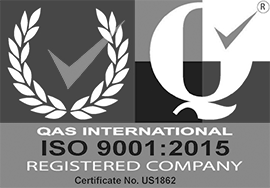Die casting is an ideal process for cost-effective, high-volume part production, yielding excellent strength and precision with the capability to produce thousands of pieces per hour. Die casting is also an in-demand manufacturing process, thanks to its versatility. Casting mold design can accommodate a broad range of product types — from simple to complex. The metal die casting process is well-suited to a variety of materials, including aluminum and zinc alloys.
To suit the requirements of varying applications and materials, several types of die casting have been developed, each with ideal uses, strengths and advantages.
Here, we will look at metal casting types and when to use them.
Die Casting Methods
The principles of die casting are the same across all of its varieties. Metal is heated until it becomes molten. It is then injected into the die cavity and held there until it cools and solidifies. At this point, the die separates and the finished parts are ejected.
Each of the methods described below achieves these principles in similar but different ways, primarily to account for differences in material properties.
Hot Chamber Die Casting
Hot chamber die casting is ideally suited for metals with a low melting point, such as zinc alloys. In hot chamber die casting, the metal material is heated to melting in a furnace integrated within the casting machine, and the plunger of the injection mechanism is immersed in this molten metal bath. The plunger withdraws to allow the material to flow into the injection chamber. The plunger then engages to force the metal through a gooseneck (another name for this type of casting) and nozzle and into the mold cavity, where it is held at pressure until cooling.
Because the injection plunger remains immersed in the metal bath, this process is only suitable for materials with a lower melting point that will not corrode or chemically damage the injection apparatus. Hot chamber die casting can yield higher throughput and lower waste, with a longer life span for equipment due to lower temperatures.
Cold Chamber Die Casting
Cold chamber die casting is ideal for metals with higher melting points, such as aluminum alloys. In cold chamber die casting, the metal is heated to melting in a separate chamber. The molten material is transferred — manually or through automation — to the shot sleeve through a pouring hole. The material is then injected by a plunger into the mold at high pressure, where it cools and is ejected.
Cold chamber die casting is required for metals with a higher melting point because these materials would otherwise quickly corrode and damage the injection plunger if they were to remain immersed in them, as it does in hot chamber die casting. In addition to suitability for higher melting points, cold chamber die casting offers benefits including increased part strength, denser castings, maximum accuracy and repeatability, and lower maintenance costs.
Regardless of which method you choose, die casting offers exceptional quality, accuracy and repeatability for efficient, high-volume part production at scale.
To learn more, contact us today.



